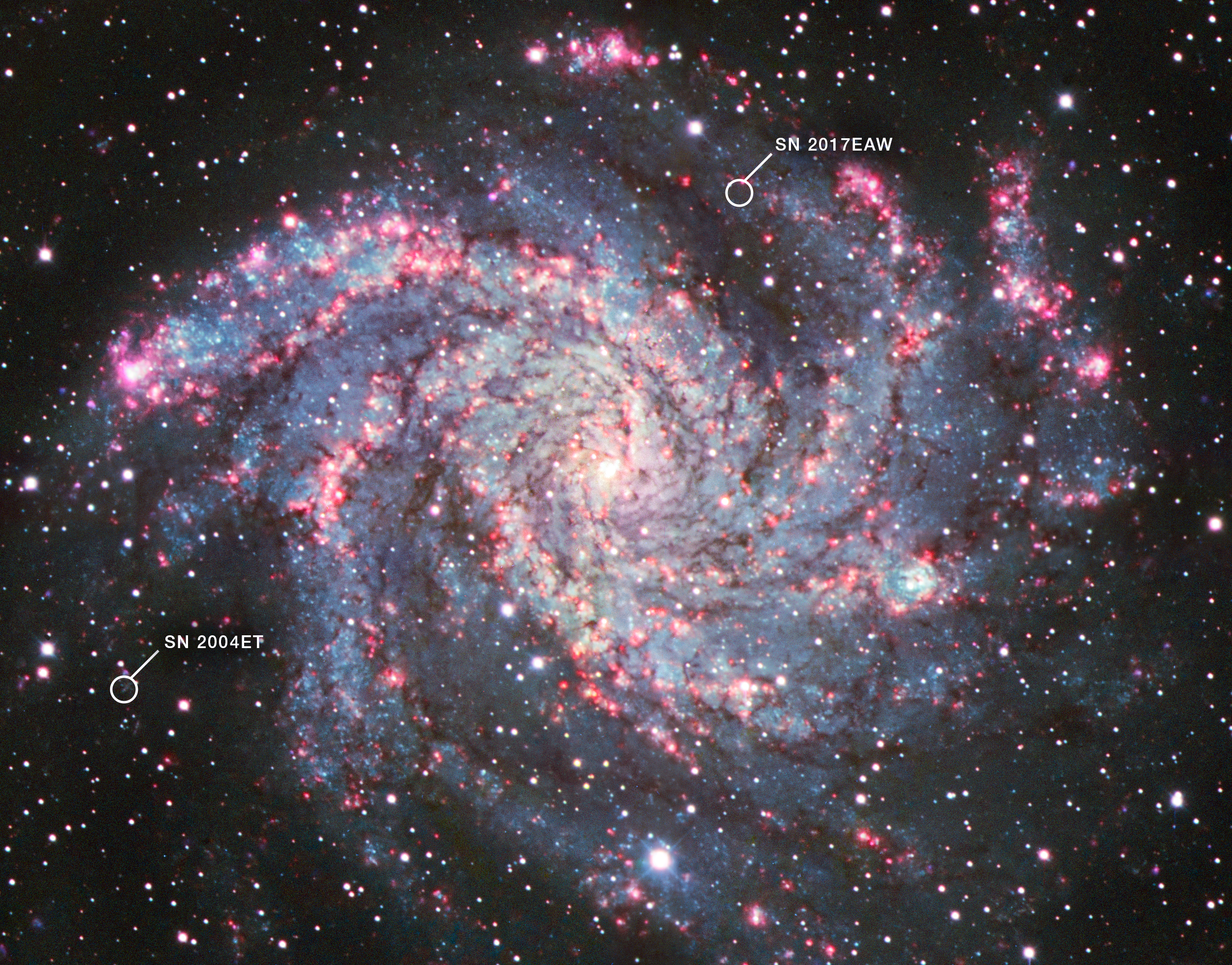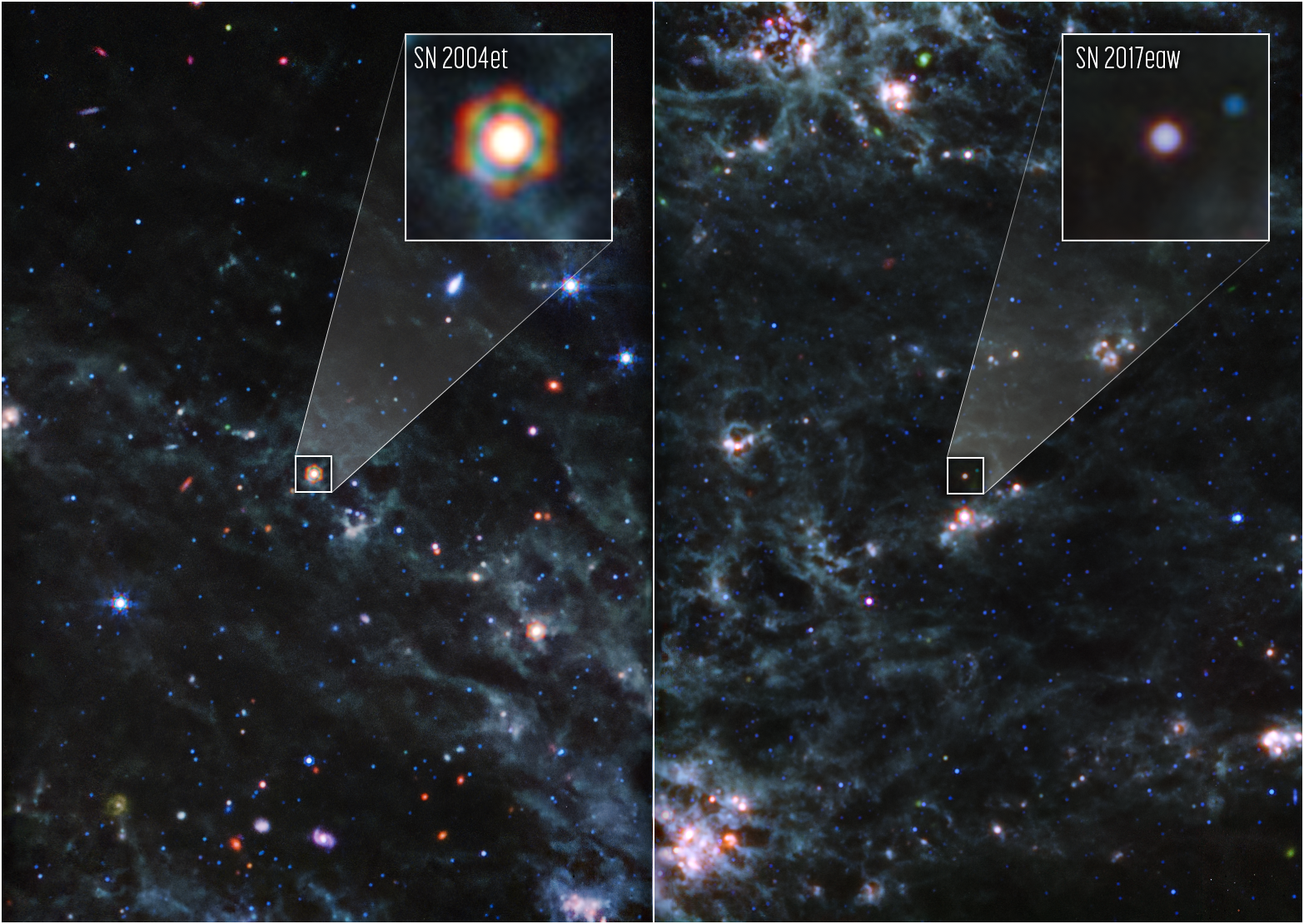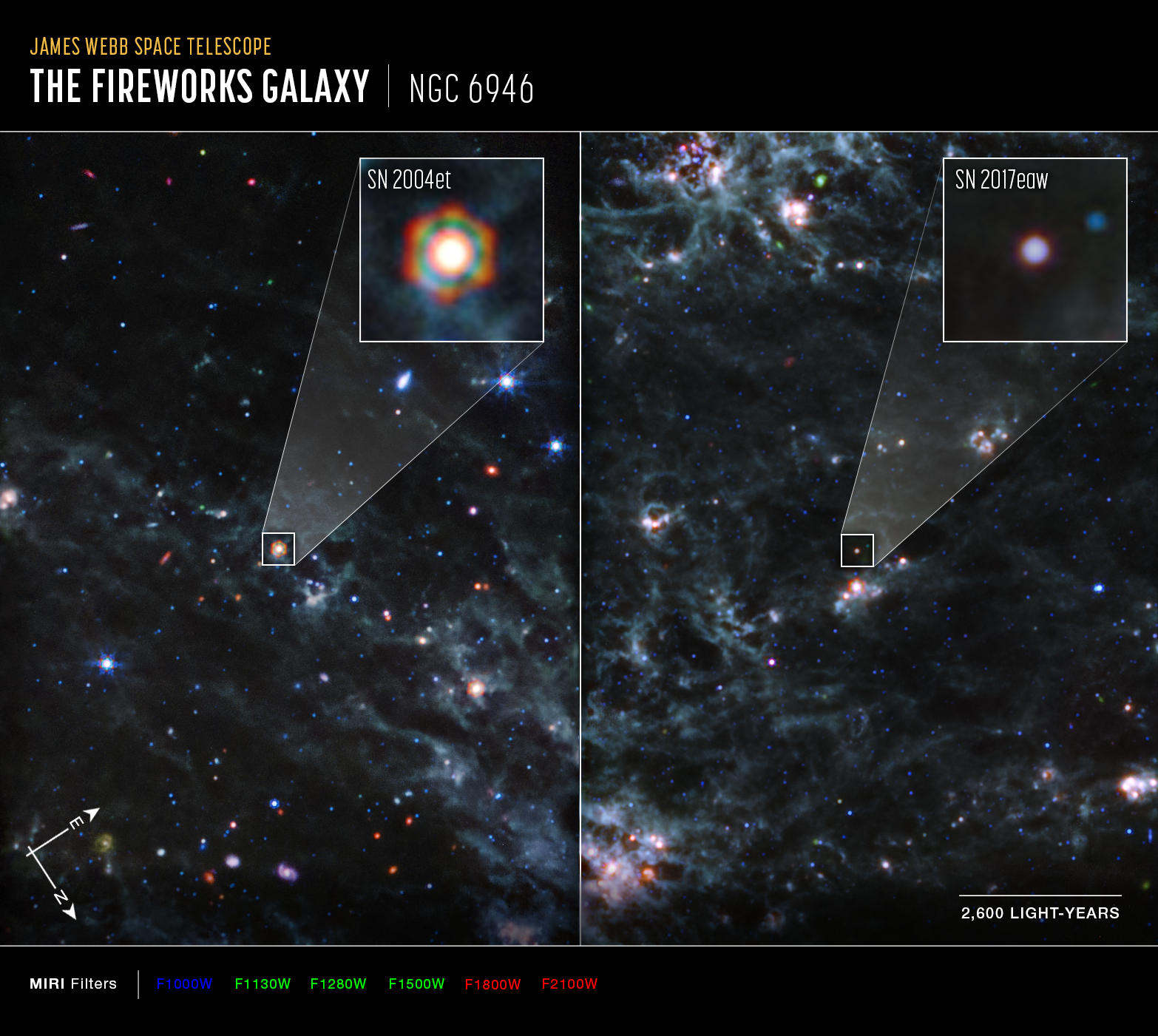1 min read
NGC 6946 (Kitt Peak National Observatory)

This image from the Kitt Peak National Observatory of NGC 6946 contextualizes the locations of Supernova 2004et and Supernova 2017eaw within the galaxy. Scientists using NASA’s James Webb Space Telescope’s MIRI (Mid-Infrared Instrument) found large amounts of dust within two Type II supernovae, Supernova 2004et (SN 2004et) and Supernova 2017eaw (SN 2017eaw), located 22 million light-years away from Earth in spiral galaxy NGC 6946. The large amounts of dust found in these supernovae using MIRI supports that supernovae played a key role in supplying dust to the early universe.
About the Object
- R.A. PositionR.A. PositionRight ascension – analogous to longitude – is one component of an object's position.20:34:52.30
- Dec. PositionDec. PositionDeclination – analogous to latitude – is one component of an object's position.+60:09:14.00
- ConstellationConstellationOne of 88 recognized regions of the celestial sphere in which the object appears.Cygnus
- DistanceDistanceThe physical distance from Earth to the astronomical object. Distances within our solar system are usually measured in Astronomical Units (AU). Distances between stars are usually measured in light-years. Interstellar distances can also be measured in parsecs.22.5 million light-years away
About the Data
- InstrumentInstrumentThe science instrument used to produce the data.KPNO 4m > MOSAIC
- FiltersFiltersThe camera filters that were used in the science observations.F499W, F502N, F656N
- Object NameObject NameA name or catalog number that astronomers use to identify an astronomical object.NGC 6946, SN2004et, SN2017eaw
- Object DescriptionObject DescriptionThe type of astronomical object.Dusty supernovae in spiral galaxy NGC 6946
- Release DateJuly 5, 2023
- Science ReleaseWebb Locates Dust Reservoirs in Two Supernovae
- CreditImage: KPNO, NSF's NOIRLab, AURA; Image Processing: Alyssa Pagan (STScI)

These images are a composite of separate exposures acquired by the James Webb Space Telescope using the MIRI instrument. Several filters were used to sample wide wavelength ranges. The color results from assigning different hues (colors) to each monochromatic (grayscale) image associated with an individual filter. In this case, the assigned colors are: Blue: F502N, Green: F499W, Red: F656N
Related Images & Videos

Dusty Supernovae (MIRI)
Images from NASA’s James Webb Space Telescope’s MIRI (Mid-Infrared Instrument) reveal large amounts of dust within two Type II supernovae, Supernova 2004et (SN2004 et) and Supernova 2017eaw (SN 2017eaw), located 22 million light-years away from Earth in spiral galaxy NGC 6946....

Dusty Supernovae (MIRI Compass Image)
This image of NGC 6946 highlighting two supernovae, SN 2004et and SN 2017eaw, by Webb’s MIRI (Mid-Infrared Camera), shows compass arrows, scale bar, and color key for reference. The north and east compass arrows show the orientation of the image on the sky. The scale bar is...
Share
Details
Laura Betz
NASA’s Goddard Space Flight Center
Greenbelt, Maryland
laura.e.betz@nasa.gov
KPNO, NSF’s NOIRLab, AURA
Alyssa Pagan (STScI)






























